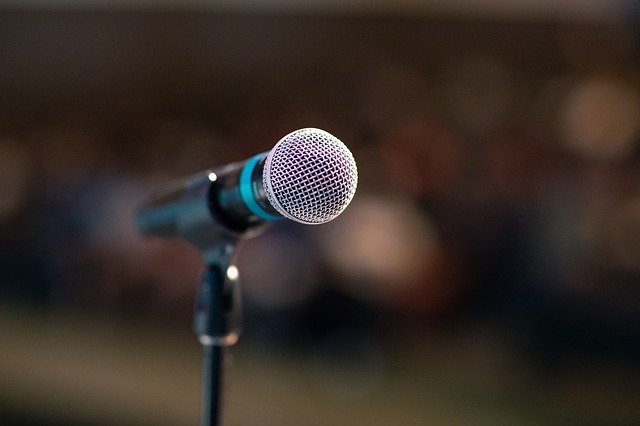
A microphone is a device that makes sound amplification possible by converting sound waves into electrical signals.
The word microphone has its etymological origin in Greek. And it is the result of the sum of several lexical components of said language:
-The word “mikros”, which can be translated as “small”.
-The noun “phone”, which is synonymous with “sound”.
-The suffix “-o”, which is used to indicate “agent”.
A microphone is a device that converts sound waves into electrical signals . In this way, it manages to amplify them.
How a microphone works
These devices generate electrical currents based on changes in air pressure . To achieve this, they can resort to different processes and techniques, such as electromagnetic induction or piezoelectricity . They generally must be connected to a preamplifier so that their signal is able to be processed, recorded and reproduced on a speaker ( loudspeaker ).
The membrane that captures sound vibrations is called the diaphragm . This diaphragm, which is protected by a grille , is connected to the system that converts sound waves into electricity. The microphone transducer is responsible for transforming sound into electrical signals, being called an element or capsule .
When a person speaks into a microphone, therefore, the sound waves it emits reach the diaphragm that is attached to the capsule, responsible for producing the electrical signals that are amplified.

In the media, the use of microphones is common.
Classification according to type
There are multiple types of microphones. The most common ones have a cable for power supply and are held with one hand: thus, the user brings their hand with the microphone to their mouth to speak or sing. There are wireless microphones with this same format.
Lapel microphones , on the other hand, can be operated without using your hands. They get caught on clothing or around the neck , always staying close to the mouth. These lapel or tie microphones are also known as electret microphones. And today they are the most used in television programs, for example.
However, the list of microphone types is longer. Good examples of this are these others:
-Dynamic microphones, which are the most versatile and are used for live vocals. They are economical, have autonomy because they do not require power and they cope very well with vibrations, temperature and even humidity.
-Ribbon microphones, which were used mainly on the radio and by singers in the 1950s. They are large, bidirectional and have great sensitivity.
-Condenser microphones, which are usually used when studio recordings have to be carried out, such as dubbing or voices for an album. In their favor is that they pick up sound very well and are also very sensitive. However, it should not be overlooked that they can allow distant sound to sneak in.
Where is a microphone used
In areas such as the media , telephony and mass public events , the use of microphones is essential.
In this way, sound amplification is guaranteed.
